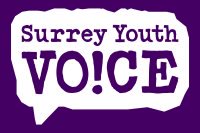
Ableism, Stigma and Discrimination: The Power of Language
Lived experiences, testimonies, and preferred terminology from young people with additional needs and disabilities living and accessing services in Surrey, UK.
Written by Emma Adsett, ATLAS member.
What is person-first language?
A linguistic form that puts the person before their disability, for example:
- A person with a disability.
- A person with autism.
- They are a young person with epilepsy.
Often person-first language is preferred or used by parents/carers of disabled children and professionals. It is also a commonly used linguistic form in academic settings such as university or research.
However, this linguistic form can be seen to oppress the individual's identity as a disabled person that is part of the disabled community; It implies that the person can be separated from their disability, which they cannot.
What is identity-first language?
A linguistic form that links the disability with the person by highlighting their condition or disability first as it is an important part of their identity. For example:
- An autistic person.
- They are autistic.
- A disabled person.
Sometimes it is not possible to put the condition or disability first due to a lack of adjectival form, for example:
A person with ADHD, rather than an ADHD person.
Identity-first language is preferred by many disabled people themselves because the way you experience the world is directly affected by your condition and/or disability.
The importance of self-definition
Not everyone feels comfortable with the same language being used and it is important that people around the individual make sure the language they use is what the individual is happy with. The easiest way to do this can be to simply ask the individual which linguistic form they would prefer.
Asking how people identify is important, not only to make sure that people feel like their identity is being respected, but because people's relationship with language changes over time.
People with are recently diagnosed may prefer person first as they may still be coming to terms with their diagnosis. This can be made more difficult by internalised ableism, stigma and discrimination associated with disabilities.
I felt ashamed because the only knowledge I had of Autism was negative. I remember there was a kid in my primary school that was autistic, and people used to whisper and gossip about the family during parent pick-up just because of the disabled young person.
Being aware that through diagnosis, I had become a target for this behaviour, made me want to separate myself from Autism. There is still so much stigma.
Took me long enough to accept that I was autistic, and it was a part of me and that I could not get rid of it, that I personally much prefer people to use identity first language with me.
Emma
Seeing other people being able to identify as Autistic allowed me to embrace it in myself and not be ashamed of it.
By searching for and accessing the online disabled community through social media, I learnt of the positive aspects and was able to tackle my misconceptions.
Identity first allows an individual to embrace their identity as part of the disabled community.
Emma
With physical identities it may be harder to define your own identity because people can see your disability and can assign their own language to it.
If in doubt, ask how people self-describe and use that language.

